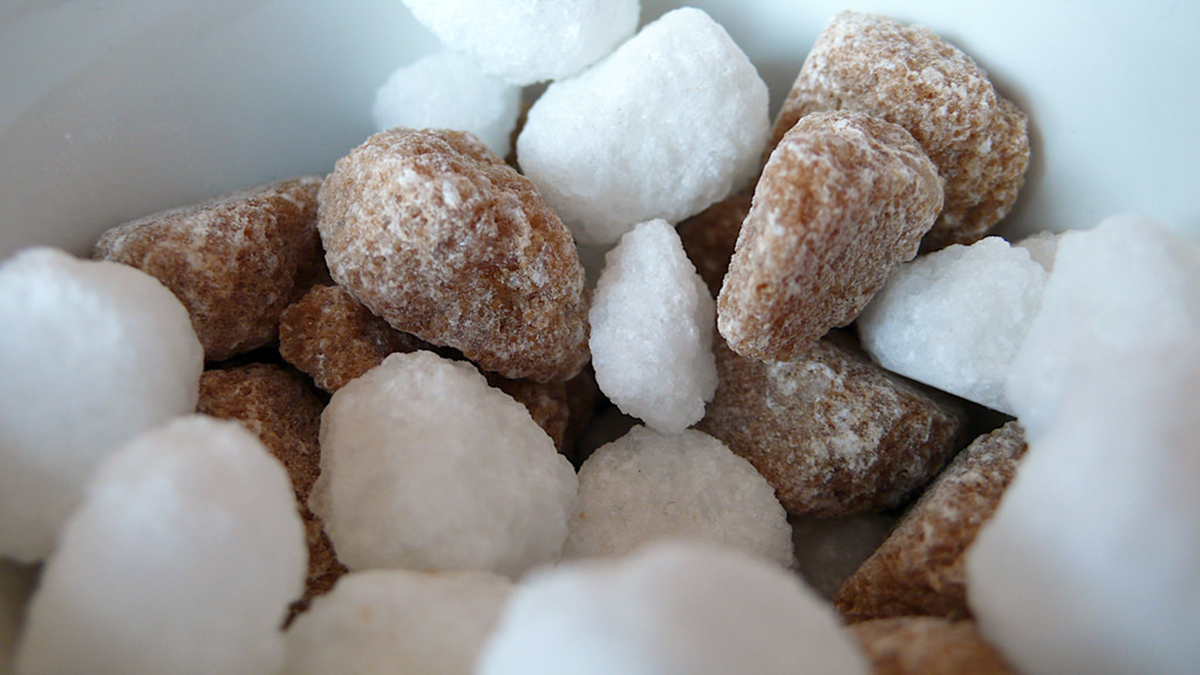Advertising Is Gold
Don’t get fooled by the advertisements. The difference between brown and white sugar is nothing like the difference between brown and white rice — or brown and white bread — where brown bread contains full grains and all the nutrients. Despite its popularity, brown sugar is actually an unhealthy thing to put into the body, like all unnatural sugars.

Sugar is one of the most commonly used items in the kitchen. That first cup of coffee, fruit juice, shake or any kind of chocolate — they all contain sugar and we use it generously. Almost no biscuit or cake can be made without it. Although they’re almost the same from a nutritional perspective, there are a few differences between white and brown sugar. The white crystals are more common, but many people prefer to use brown sugar over white. Brown sugar behaves better during the baking process, however white sugar tastes sweeter. White sugar has a longer shelf life and dissolves more easily when you put it in liquids. All natural nutrients from the sugar cane are removed in the refining process.
The Production Of Brown Sugar
Brown sugar is a wide term, because there is more than one way to make it. Basically, it is just a sugar that contains molasses which gives it that distinctive taste and color, but there’s more to the story. Brown sugar can be:
- Partially refined or unrefined — sugar that still contains molasses from the original refining process. It is often labeled as natural, raw, muscavado, and factory, among other names, and these sugars look wet and not as soft as other (refined) sugars. Although there is more molasses in natural brown sugar than in the refined type, it still has minor nutritional value and the mineral content is minimal.
- Refined brown sugar — sugar that is made by adding sugar cane molasses back to the already refined white sugar crystals. Manufacturers have to carefully control the ratio of sugar crystals and sugar cane molasses. This is the sugar that almost all people call by the generic term “brown sugar” — commercial, soft, and widely available.
Nutritional Value
Brown sugar has a lower caloric value than white sugar because of the water inside it, but it packs more densely due to its smaller crystals, so it may contain more calories if you measure by volume. Brown sugar has 373 calories in 100 grams, and white sugar has 396.
Mineral content is quite low, almost non-existent, and all present traces come from the molasses that is added to white sugar. Molasses can be a good source of calcium, potassium, iron and magnesium. One tablespoon covers 20% of the recommended daily value of all. We’ll talk more about the benefits of molasses in the second part of the article.
Health Benefits Of Molasses
The only major difference between commercial brown and white sugar except for the color is that brown sugar has molasses in it. Molasses are a byproduct of the refining process. They remove it from white sugar, and leave it in the brown sugar.
Regarding blackstrap molasses, it’s the healthiest of all sugar cane products. It is made by mashing sugar cane to release juice, and boiled to create syrup. The second boiling is what creates molasses. After it’s boiled for the third time, it’s ready for usage. This is widely known as blackstrap molasses and it has least sugar of all sugar cane products.

Various ways in which molasses aids to our health:
- Suitable for diabetics — everyone with diabetes knows how hard it is to have a sweet tooth but aren’t able to eat everything you want. Even though molasses is derived from sugar cane and has as many carbs as any other sugar, the body digests it more slowly, which helps to stabilize blood sugar levels.
- Improves blood quality — when it comes to anemia and other blood deficiencies caused by a lack of iron, molasses comes in handy. Five tablespoons of blackstrap molasses has around 95% of the daily recommended allowance of iron. You can add it to any recipe you want, but also to a glass of warm water.
- Good source of potassium — it is widely known that banana is among the best sources of potassium, but blackstrap molasses comes right behind the yellow fruit. A tablespoon of molasses contains almost 300ml of potassium and adds a quick boost to our bodies. It can lower blood pressure very fast. It also relaxes muscles and prevents muscle cramps.
READ Strong Bones: Tips to Boost Bone Health
- Improves bone health — Even though calcium is king when it comes to bone health, magnesium also plays an important role. Being rich in both, magnesium and calcium, molasses is a great solution to prevent osteoporosis. Five spoons of molasses counts as 50% of daily allowance of calcium, 35% of magnesium, and 95% of iron. Keeping your magnesium levels in order prevents osteoporosis and asthma, among other diseases that can affect our bodies.
You can mix molasses with water, your favorite fruit juice, smoothies, or pop it to sweeten your stir-fry. It’s completely optional. Many people use it to make gingerbread, or any of their baking. Molasses has a strong flavor and it would be hard to add two or more tablespoons to only one drink, but if you’re making a pitcher of some type of tea or other beverage, it would be a great choice.
Even though brown sugar does not aid health in any way (at least not according to science so far), put a tablespoon of molasses here and there and you’ll see changes in your health and energy levels soon enough.
- Photo courtesy of plasticbag: www.flickr.com/photos/plasticbag/488708086/
- Photo courtesy of shimelle: www.flickr.com/photos/shimelle/3656683006/


Your thoughts on this